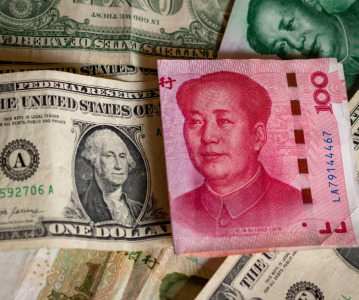Macular Degenerati?on Market to Witness Modest Growth in the Asia-Pacif?ic Region

The macular degeneration market in the Asia-Pacific region (India, Australia, China and Japan) is expected to undergo a moderate increase from $675.7 million in 2012 to $1,016.1 million by 2019, at a Compound Annual Growth Rate (CAGR) of 6%, says business intelligence provider GBI Research. The absence of promising products in the pipeline or expected new drug launches is thought to account for the expected increase.
According to the company’s latest report*, Japan represented 53% of the macular degeneration market in the Asia-Pacific region in 2012, followed by Australia, with a 33% share. Although there is currently no prominent drug launches scheduled, the market is set to grow moderately because of an increase in the region’s aging population.
In addition, in 2012, approximately 98% of the global wet Age-related Macular Degeneration (AMD) market revenue was generated by anti-angiogenic therapies.
The cumulative revenue achieved by these therapies (Lucentis, Eylea and Macugen) was found to be $4.9 billion. Nearly 80% of the revenue was generated by Lucentis, followed by the new entrant, Eylea, with a share of 18%.
Another market driver is the considerable R&D activities surrounding novel and effective diagnostic tools for the identification of AMD, such as ArcticDx Inc., which has developed a test to determine a person’s inherited risk for AMD.
However, the high annual cost of therapy for the AMD drugs, excluding the off-label Avastin, challenges the number of people using the treatment, especially in countries such as India and China, because of low healthcare access.
Sravanthi Addapally, GBI Research’s Analyst, says: “Along with the high cost of therapy, patient compliance also diminishes following a slight improvement in vision or attainment of symptomatic relief. Such reduced adherence to the treatment regimen could be a barrier to the macular degeneration therapeutics market.”
Also, there is a high percentage of failure rates in both early- and late-stage clinical trials of the therapy, which could also hinder further market growth.
Related News
-
News US BIOSECURE Act passed by US House of Representatives
The controversial act, which has already impacted several foreign companies operating in the US, was passed by the House of Representatives on September 9, 2024. It is now headed for the US Senate before it can be signed into law by President Joe Biden... -
News Pharma Supply Chain People Moves
The latest appointments, promotions, and structural changes across the pharmaceutical supply chain. -
News Drug prices agreed upon as part of the US Inflation Reduction Act
The Inflation Reduction Act brought into constitution by the Biden administation in 2022, which proposed a drug price negotiation between the government and pharmaceutical companies, has reached it's first agreement. -
News BIOSECURE Act continues to loom over Chinese pharma manufacturers
With the US BIOSECURE Act on its way to passing into legislation, Chinese companies are facing declining revenues within the first half of 2024 as US pharmaceutical and healthcare companies pull their businesses from the country. -
News Ophthalmologic drug product Eylea faces biosimilar threats after FDA approvals
Regeneron Pharmaceutical’s blockbuster ophthalmology drug Eylea is facing biosimilar competition as the US FDA approves Biocon’s Yesafili and Samsung Bioepis/Biogen’s Opuviz. -
News ONO Pharmaceutical expands oncology portfolio with acquisition of Deciphera
ONO Pharmaceutical, out of Japan, is in the process of acquiring cancer-therapy maker Deciphera Pharmaceuticals for US$2.4 billion. -
News First offers for pharma from Medicare drug price negotiations
Ten high-cost drugs from various pharma manufacturers are in pricing negotiations in a first-ever for the US Medicare program. President Biden’s administration stated they have responded to the first round of offers. -
News Eli Lilly’s Zepbound makes leaps and bounds in weight-loss drug market
In the last week, Eli Lilly has announced their partnership with Amazon.com’s pharmacy unit to deliver prescriptions of Zepbound. Zepbound has also surpassed Novo Nordisk’s Wegovy for the number of prescriptions for the week of March 8.&nbs...
Position your company at the heart of the global Pharma industry with a CPHI Online membership
-
Your products and solutions visible to thousands of visitors within the largest Pharma marketplace
-
Generate high-quality, engaged leads for your business, all year round
-
Promote your business as the industry’s thought-leader by hosting your reports, brochures and videos within your profile
-
Your company’s profile boosted at all participating CPHI events
-
An easy-to-use platform with a detailed dashboard showing your leads and performance



.png)
.png)

.png)
.png)